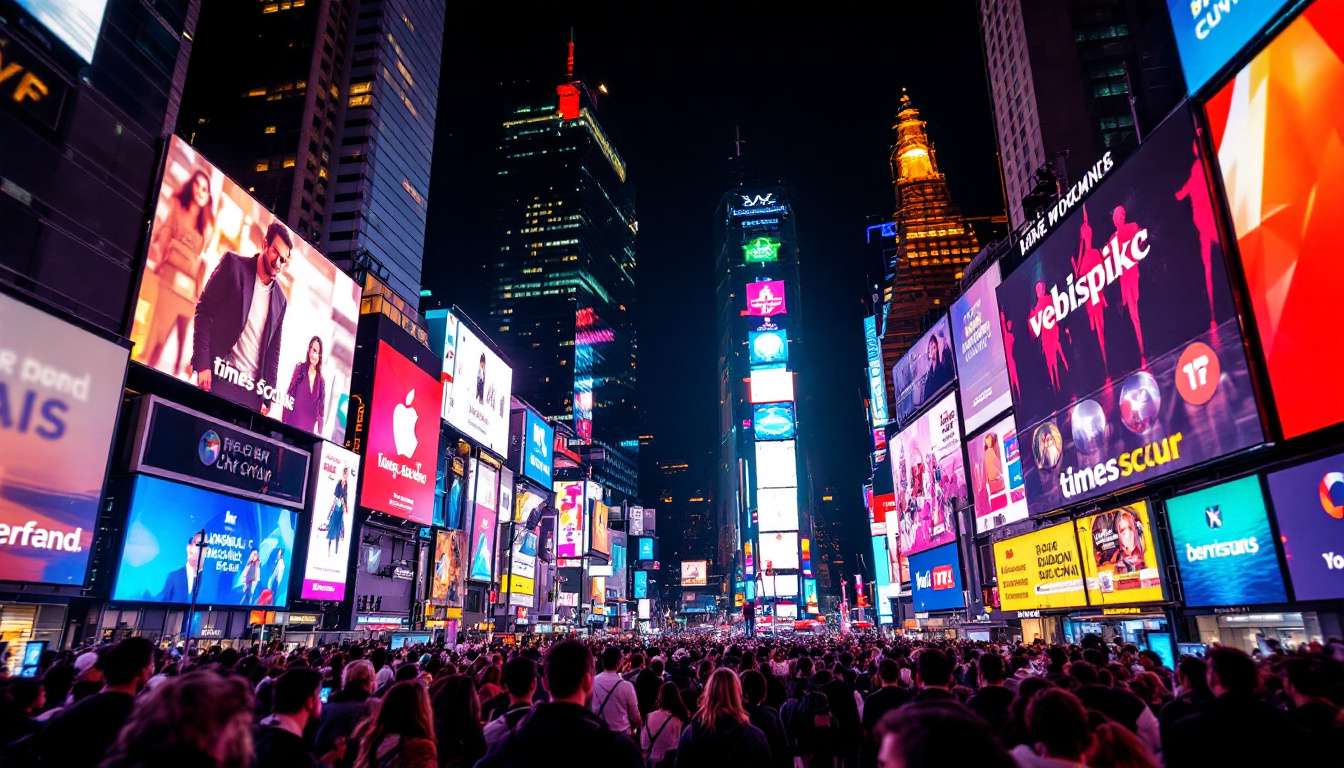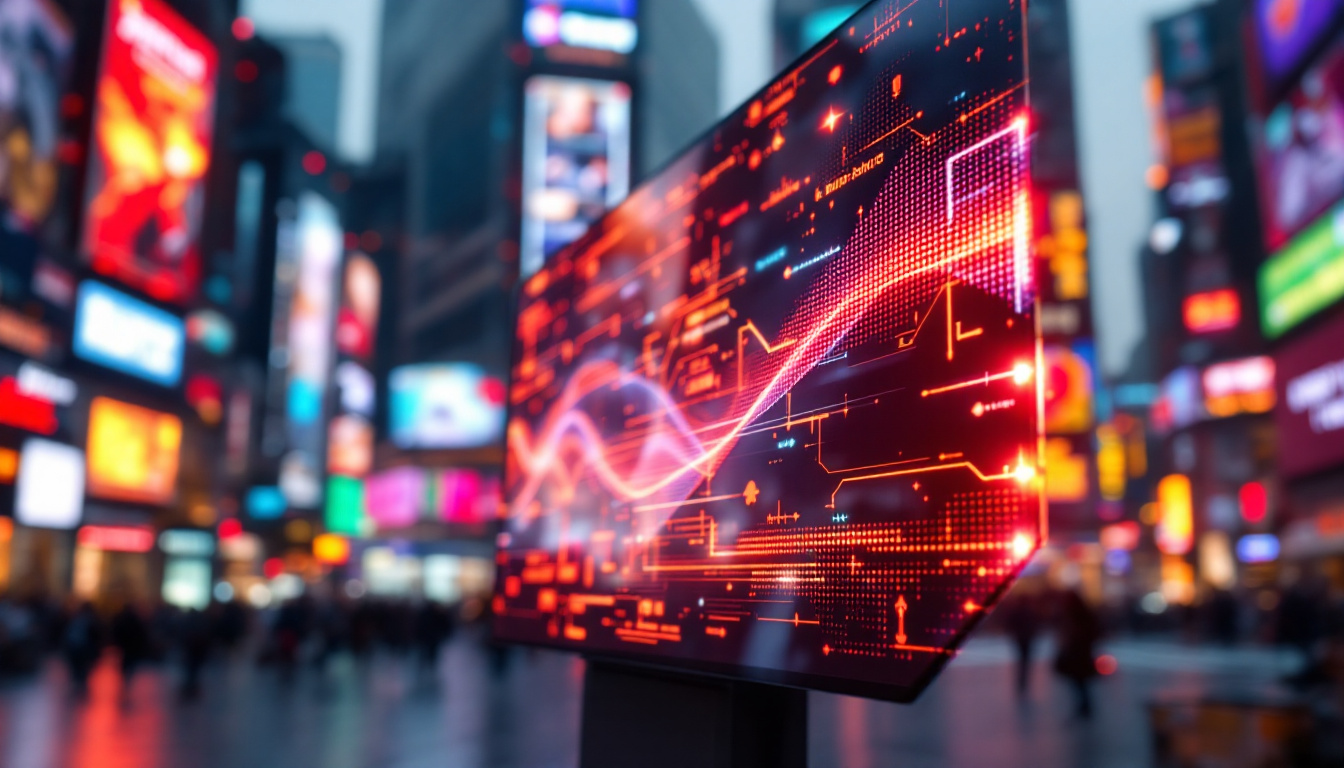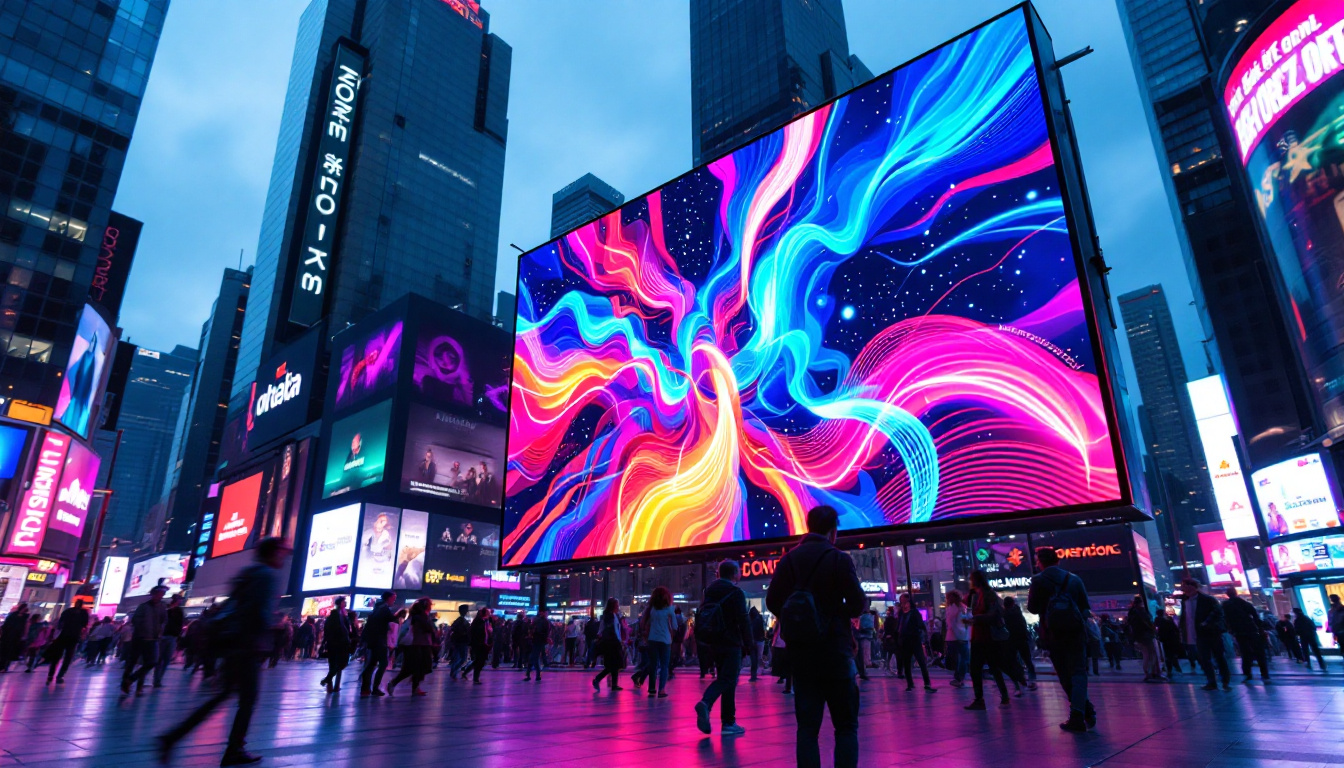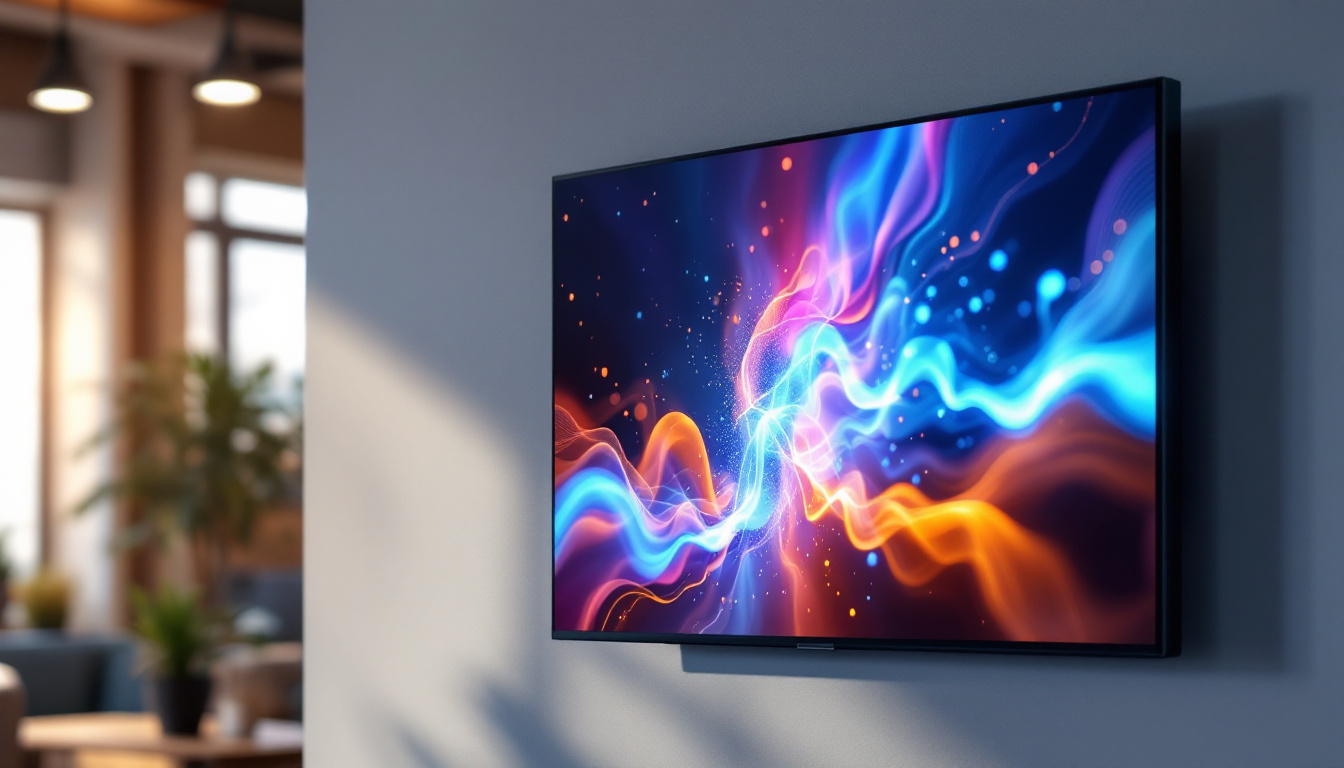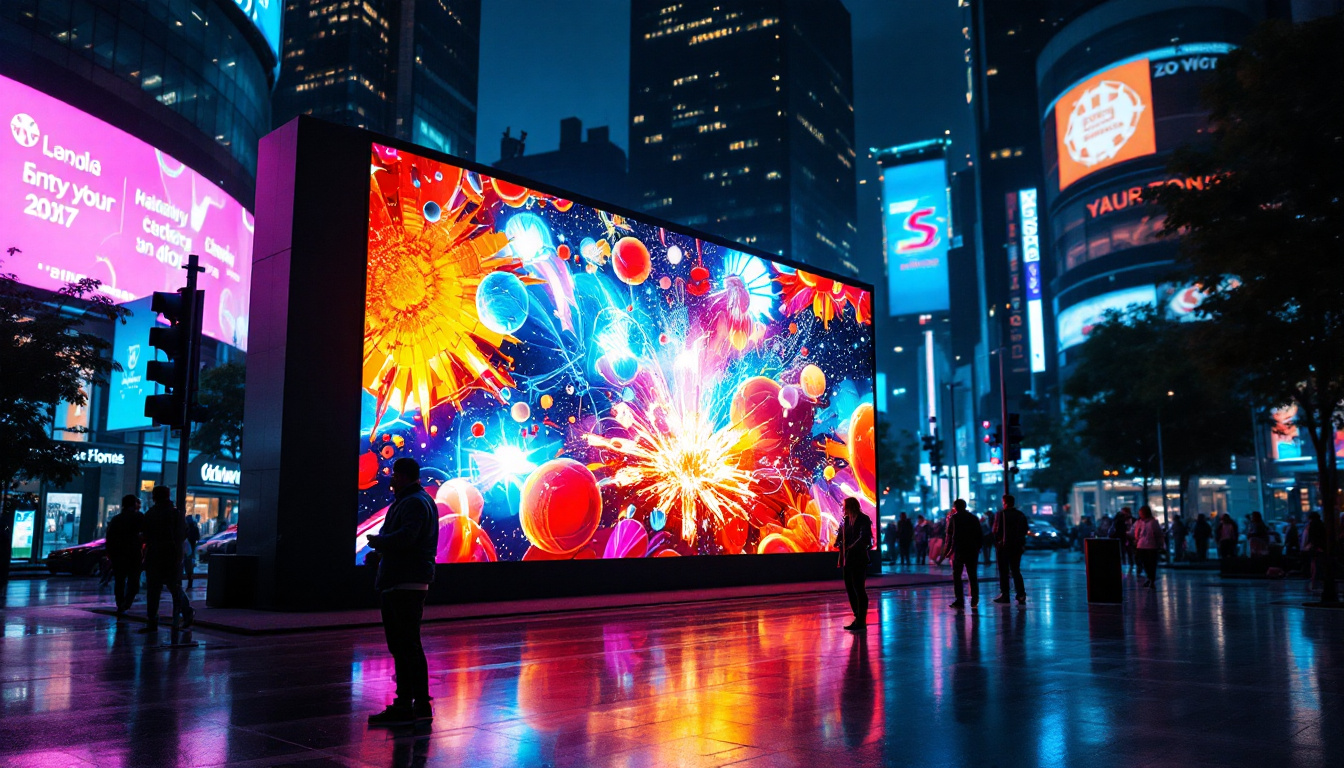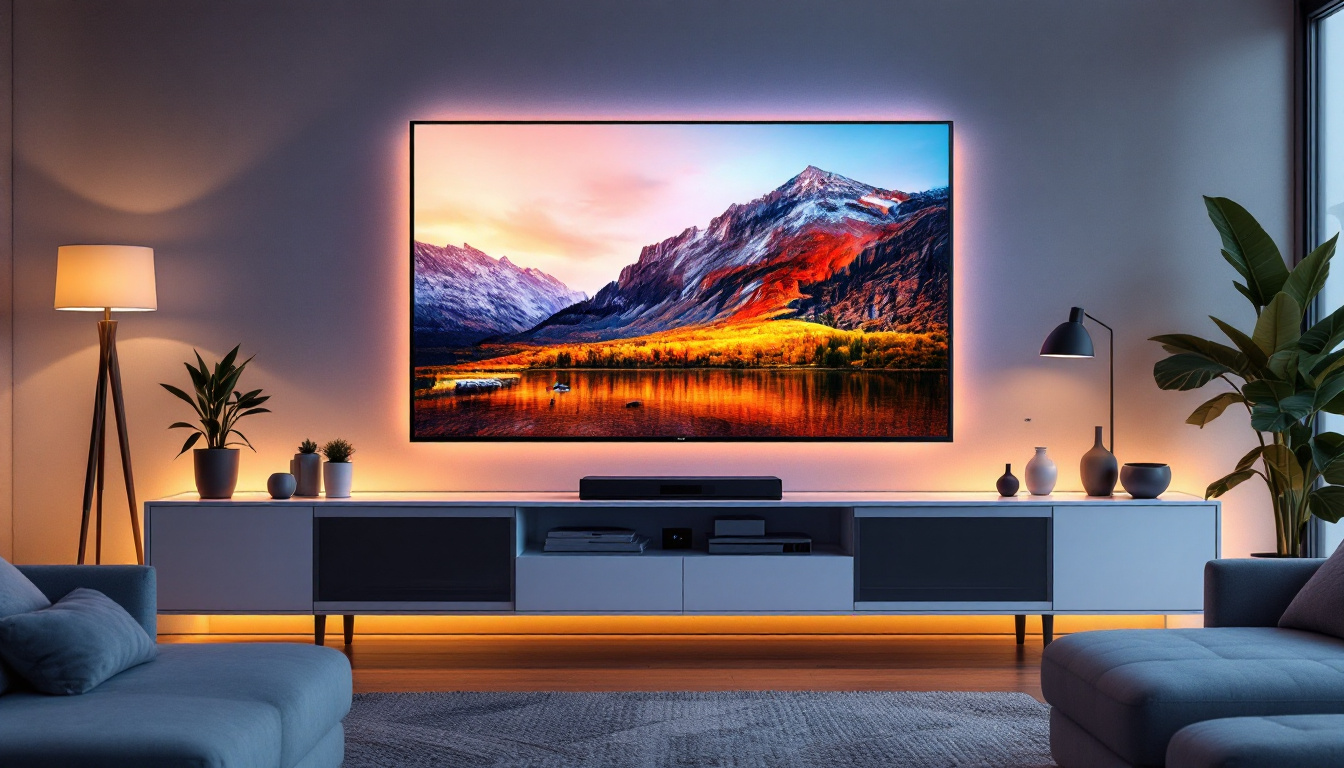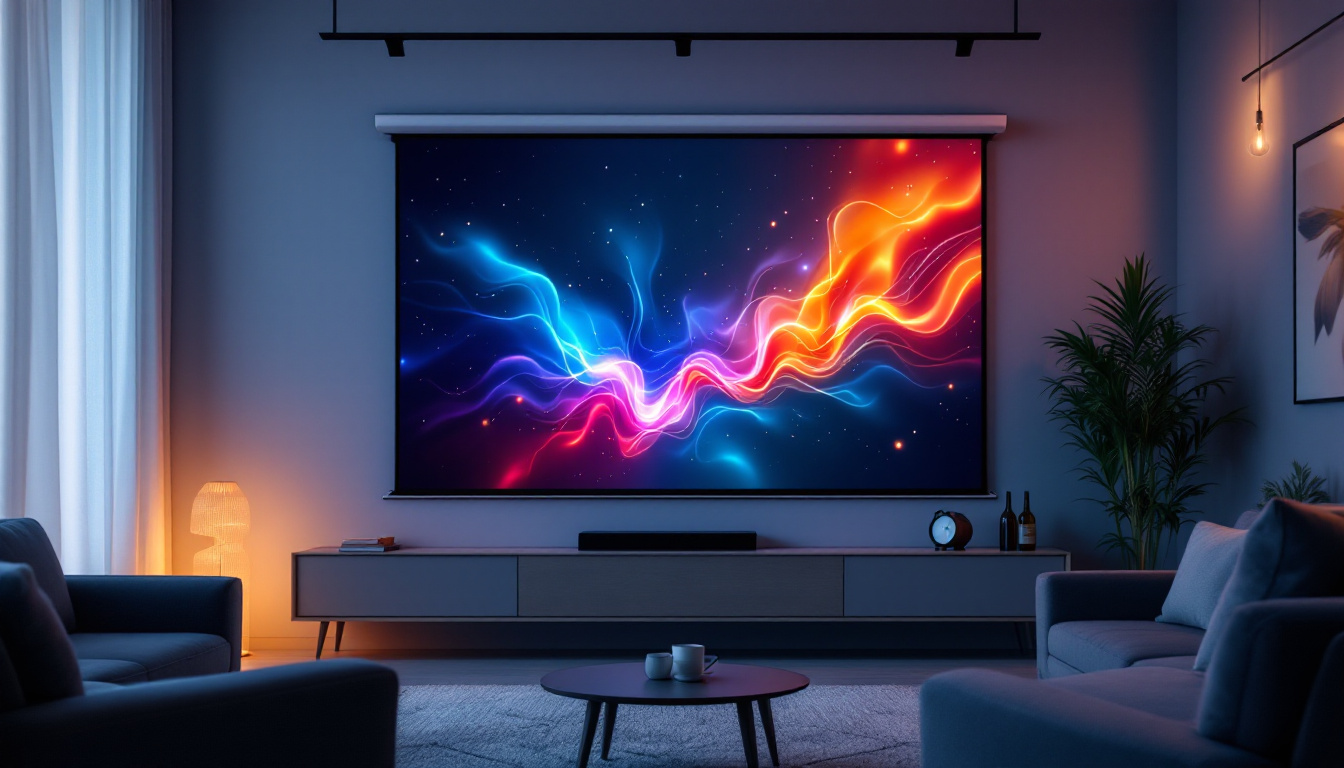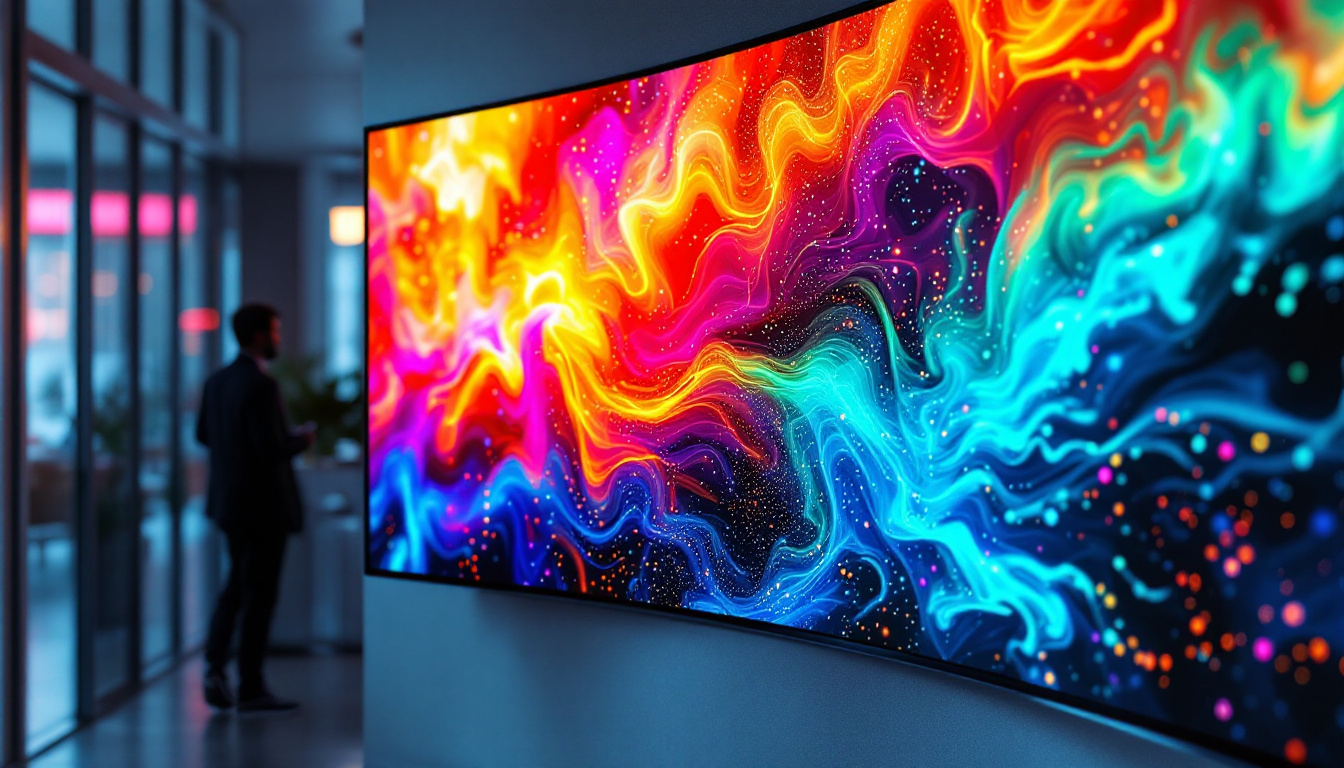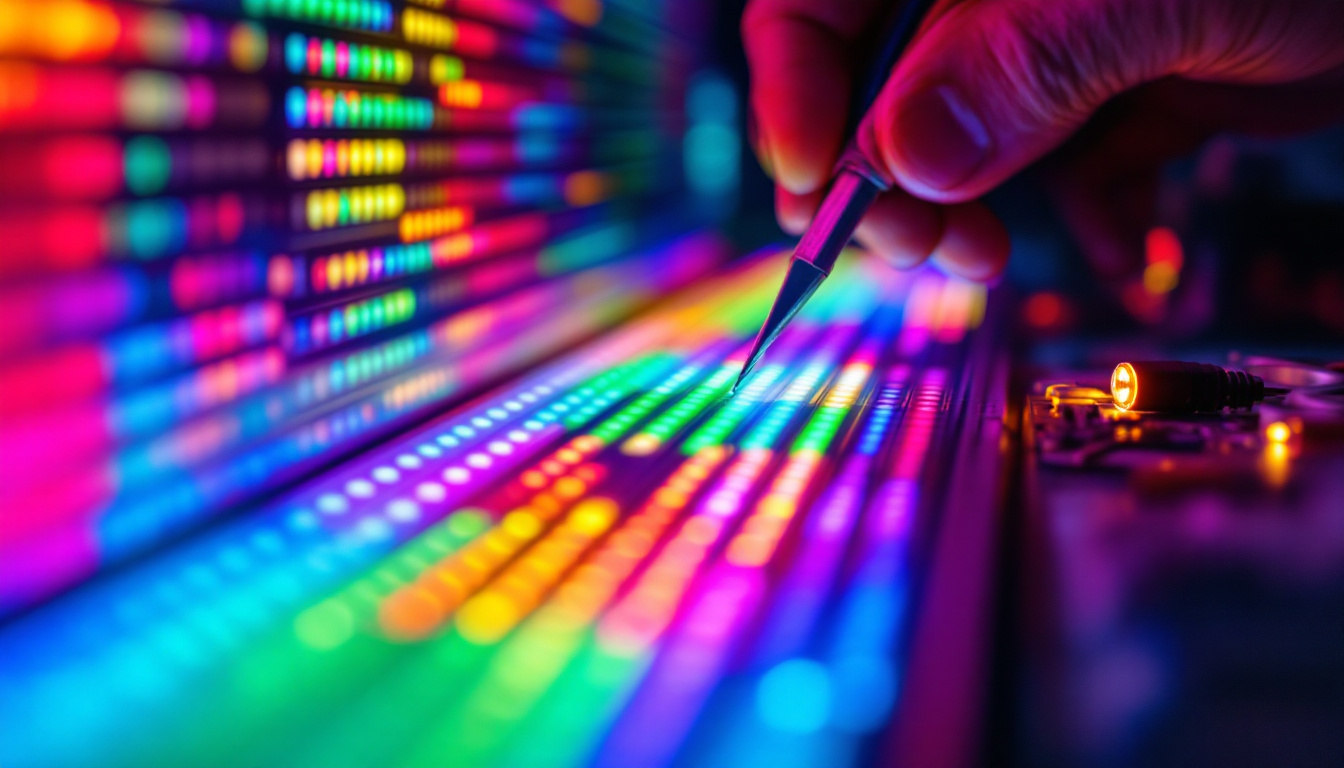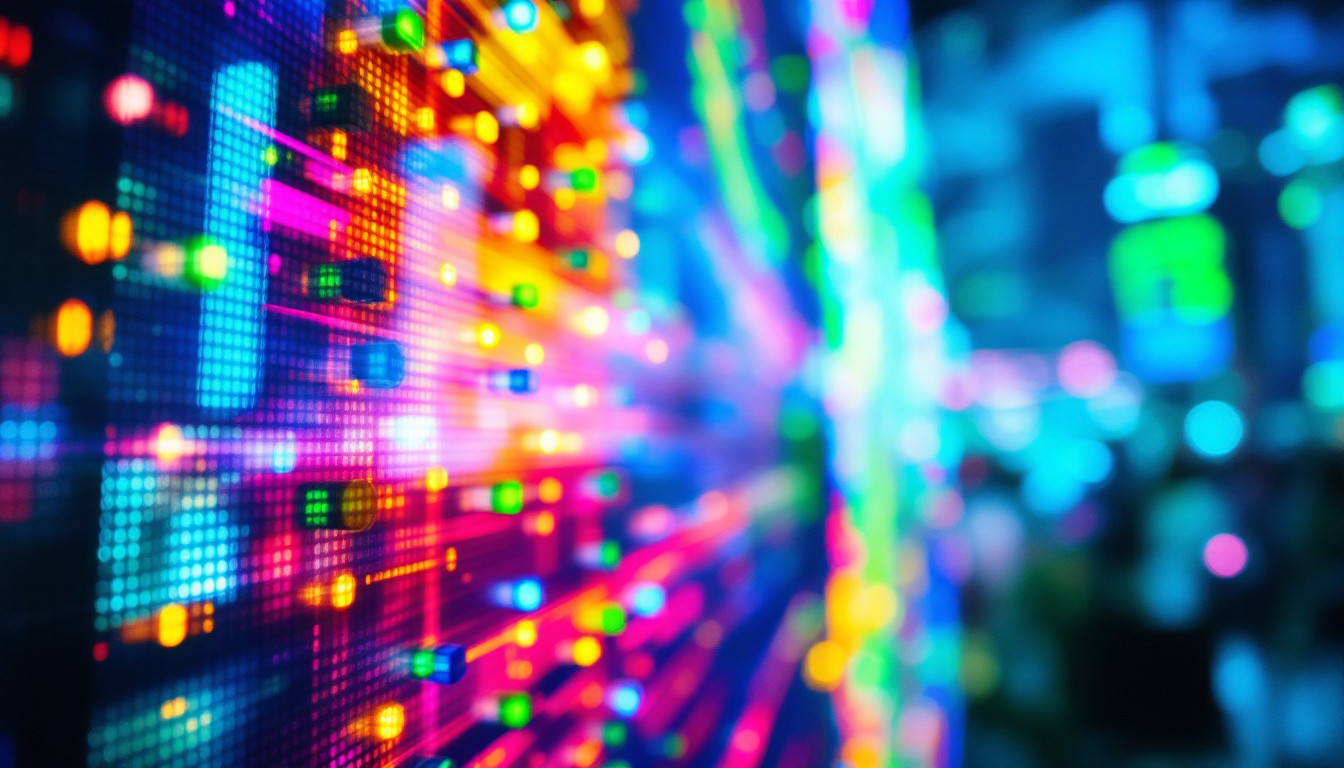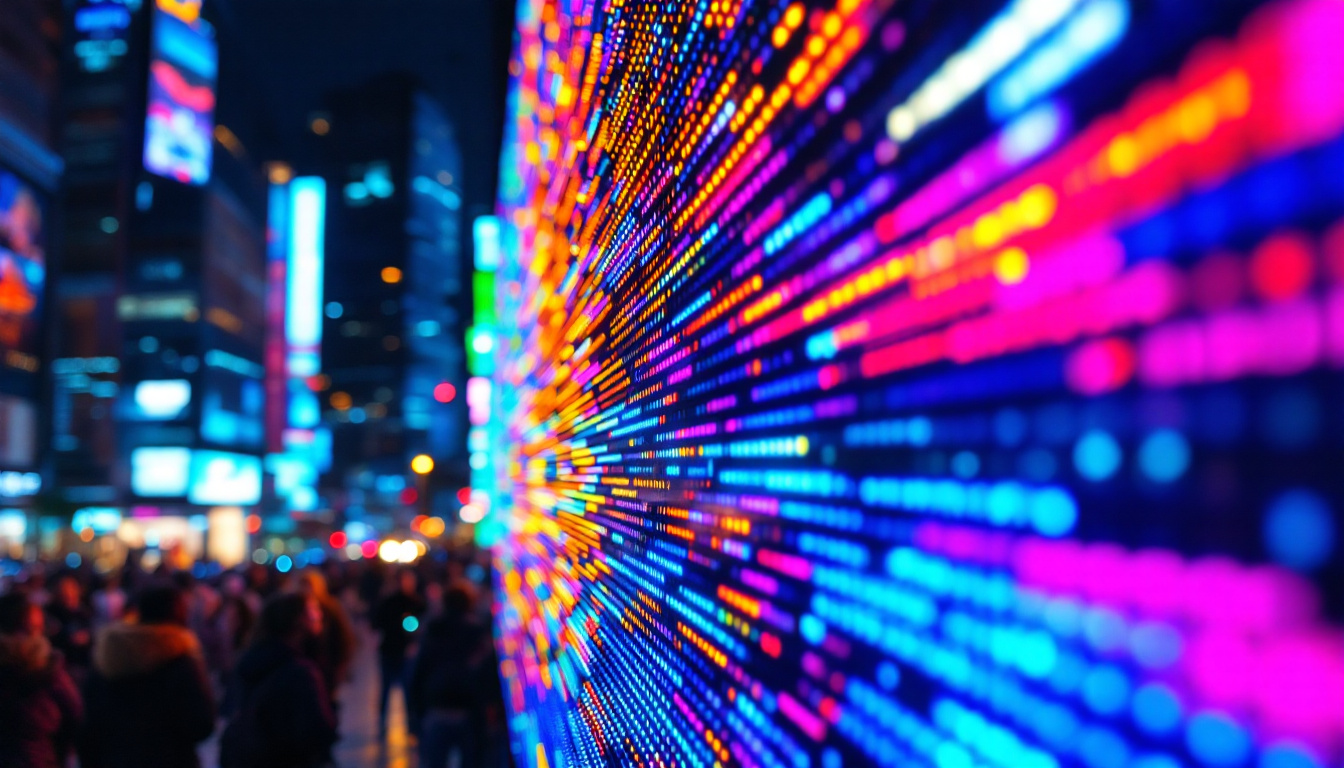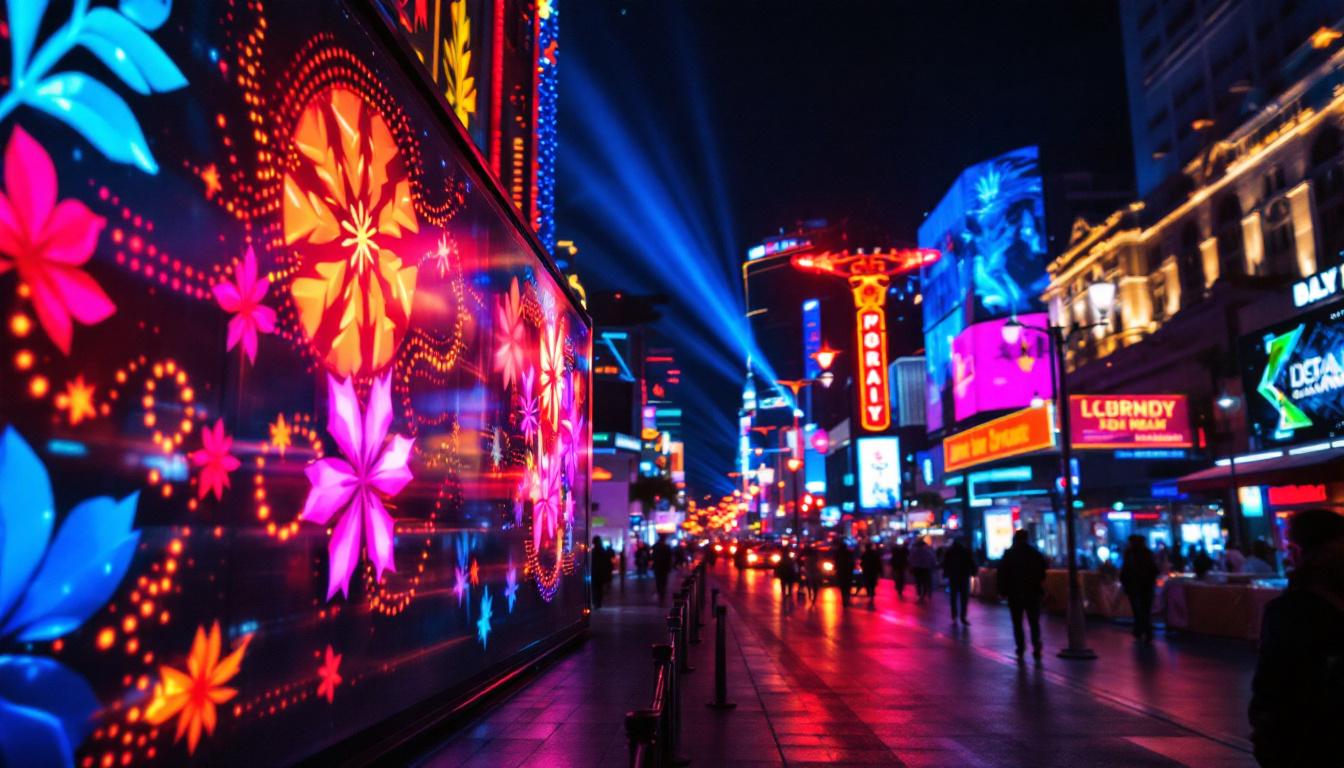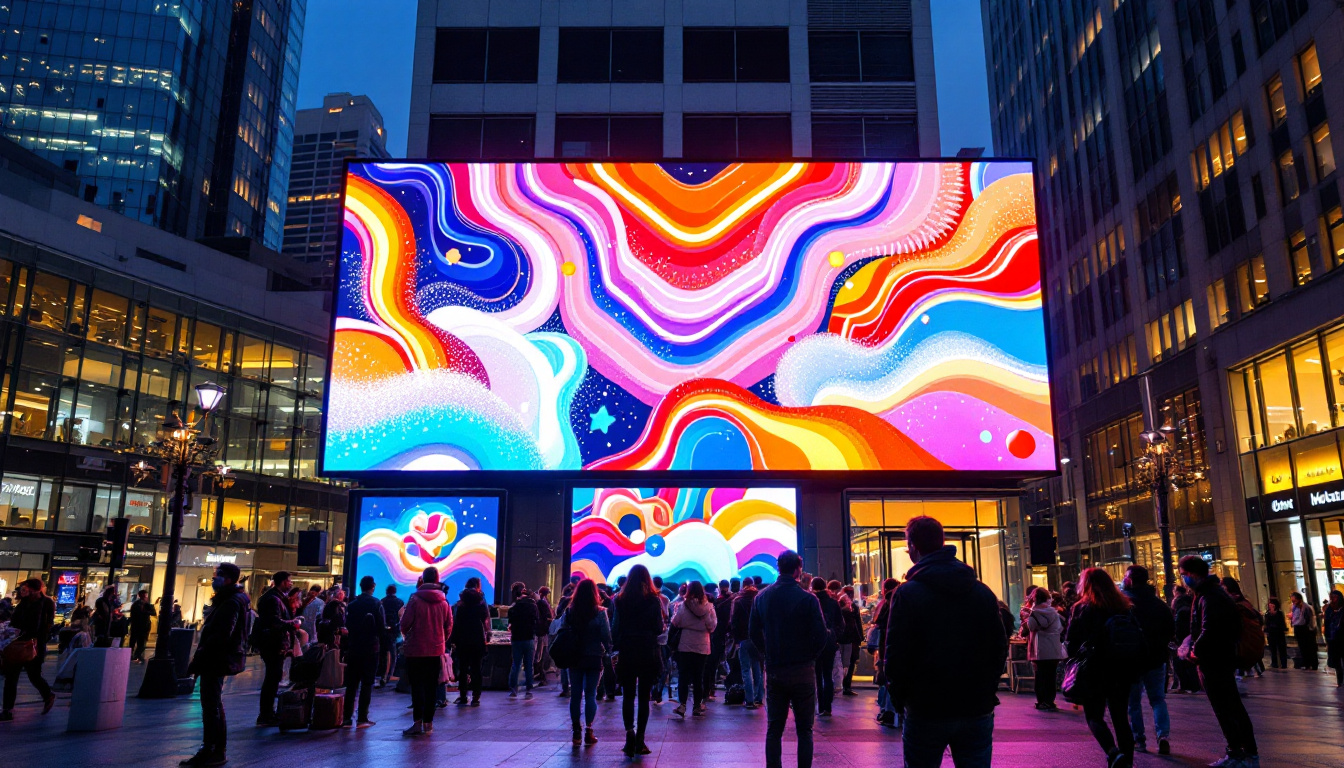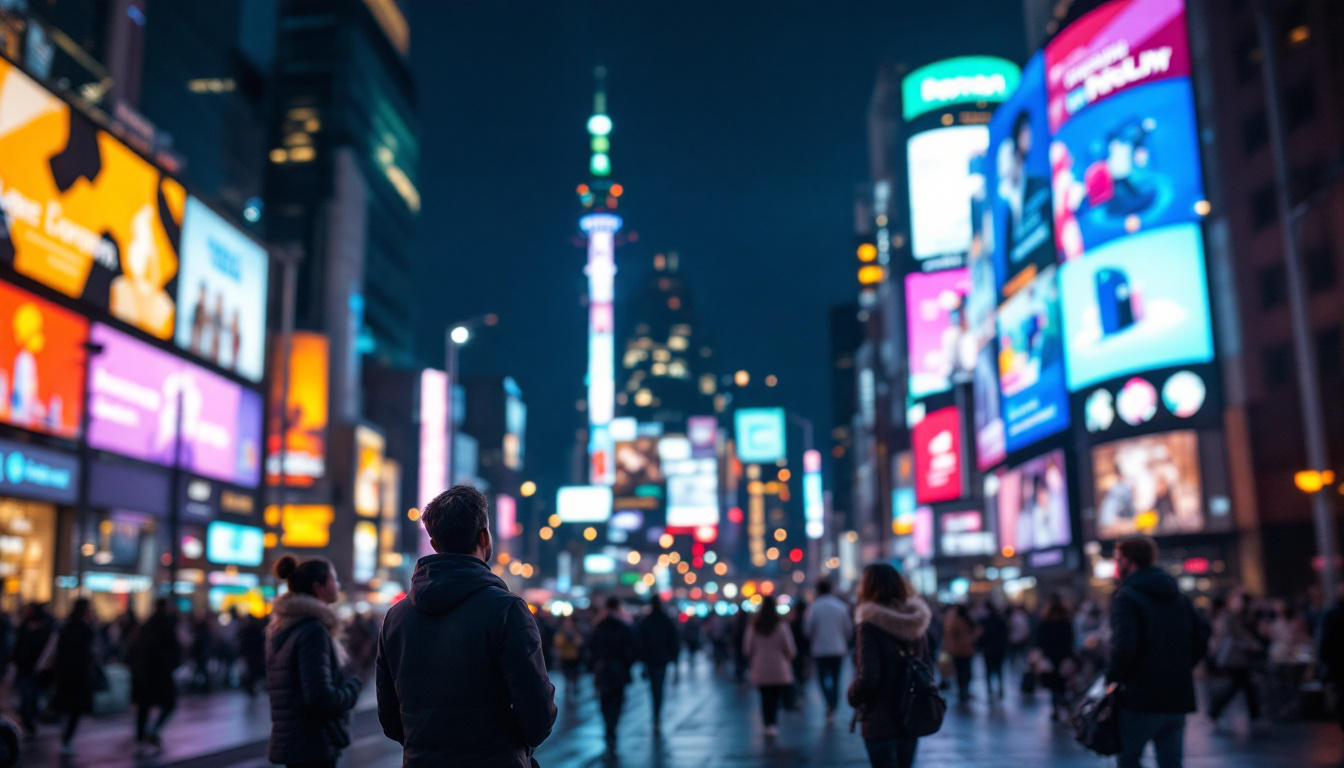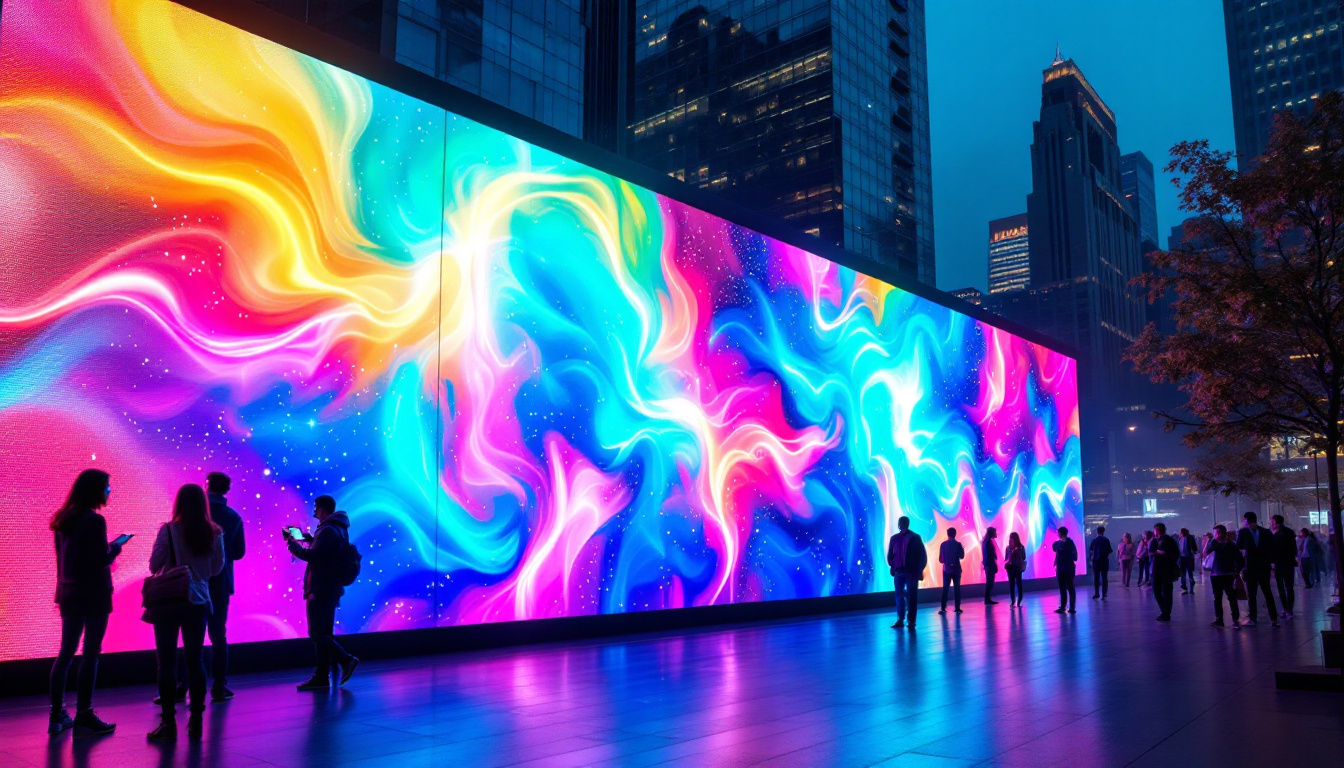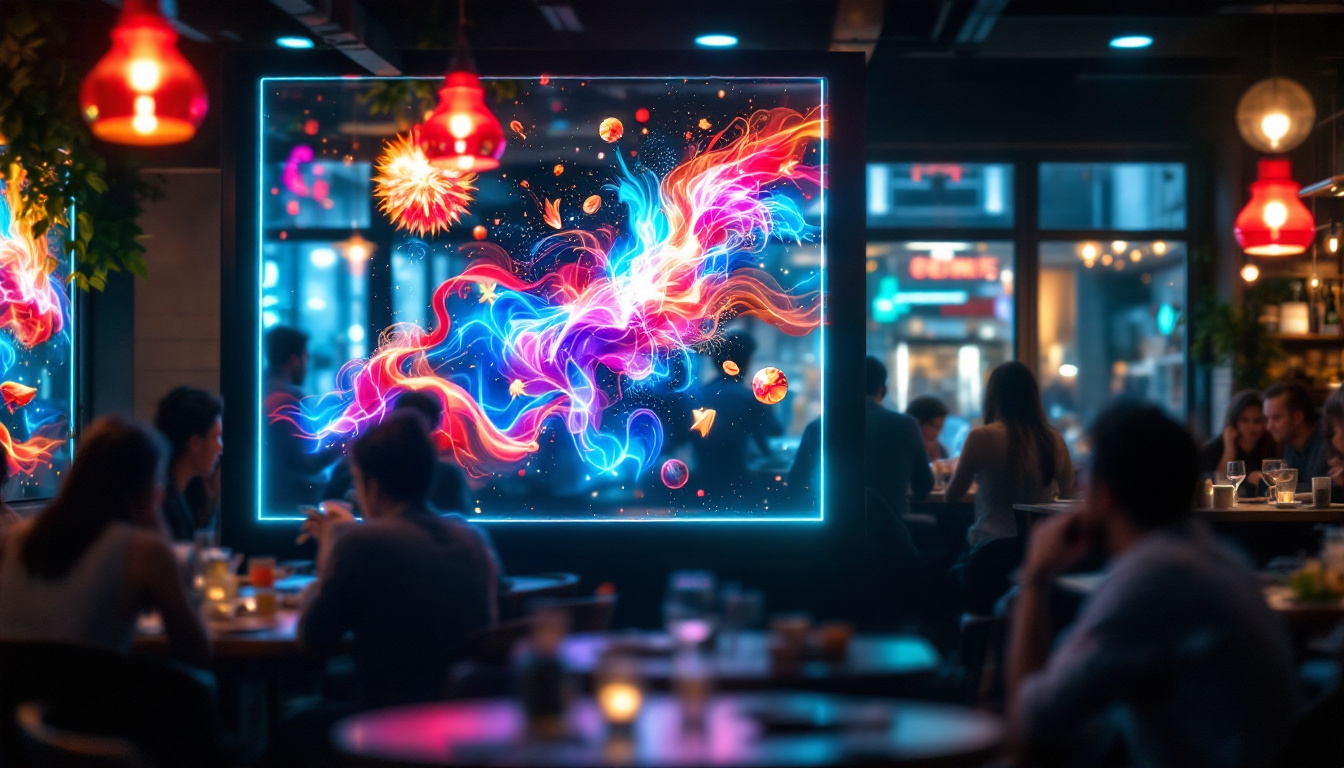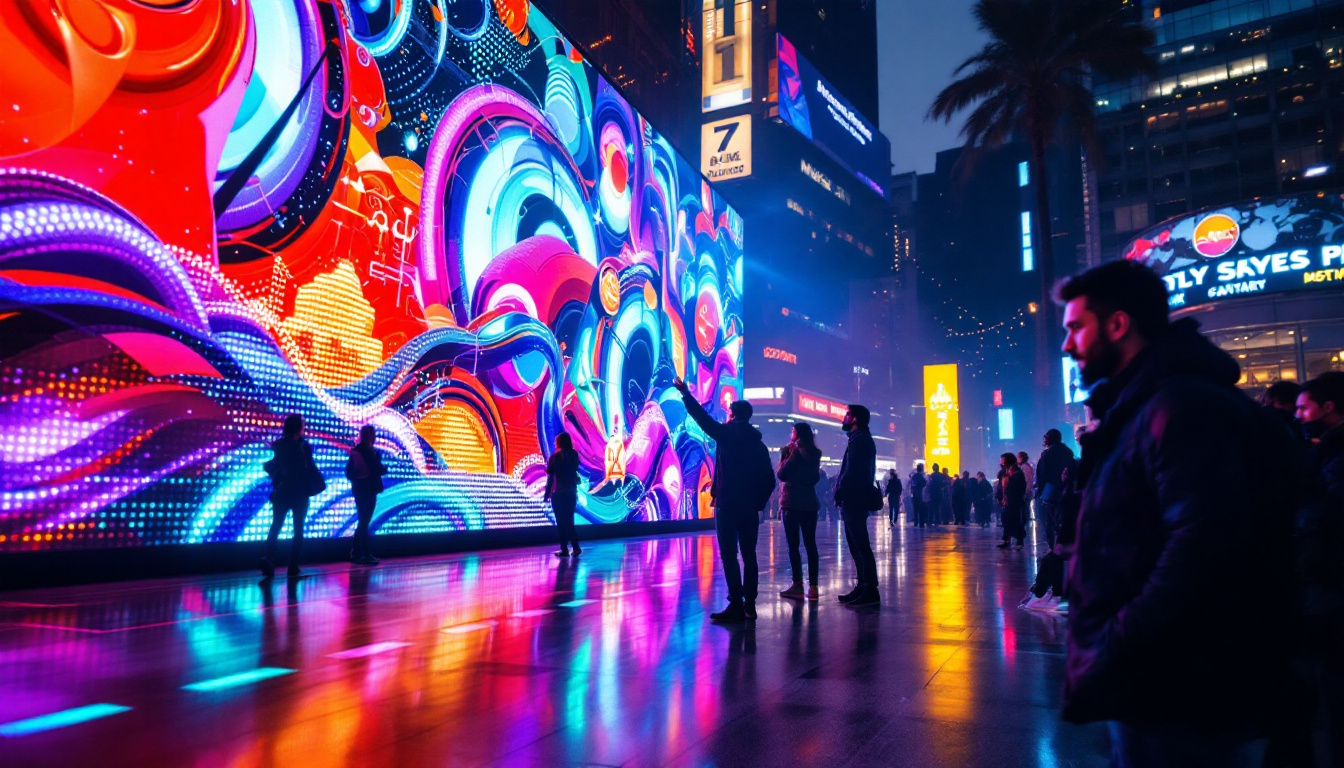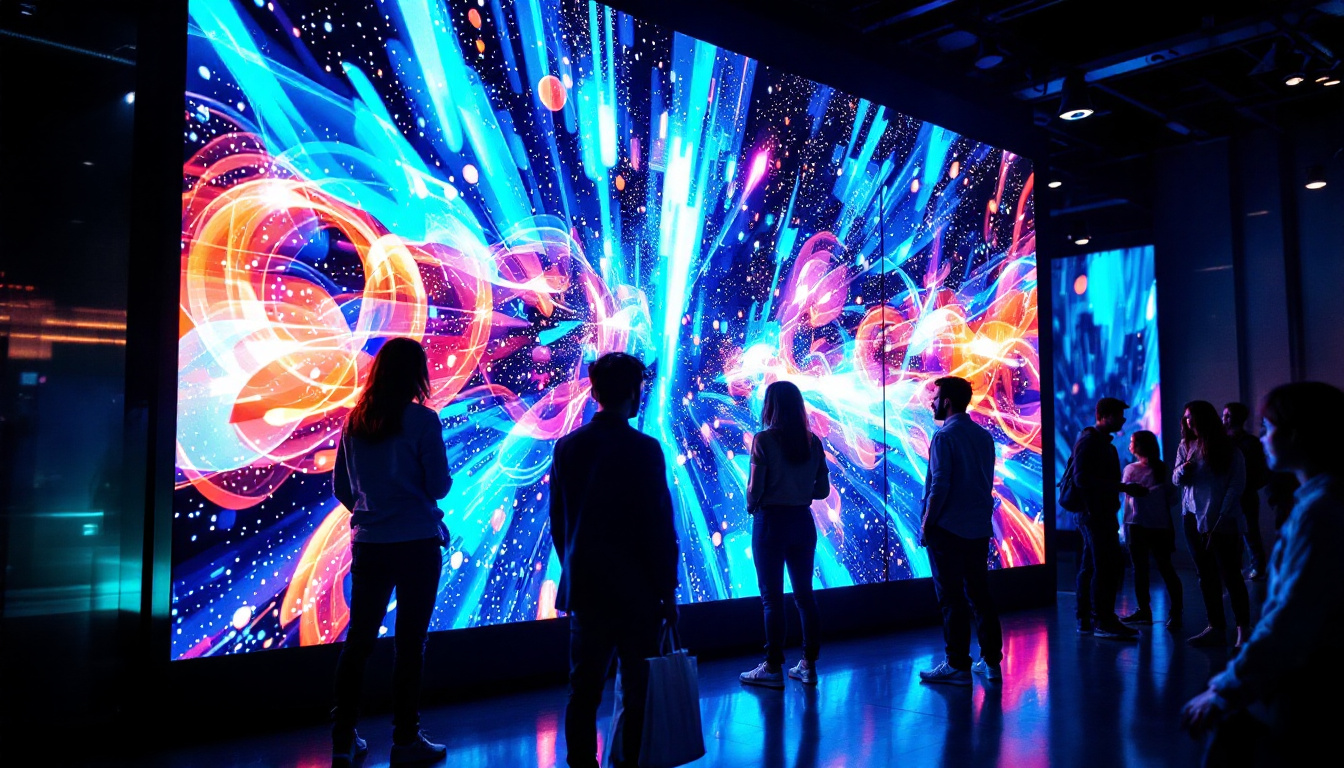Time Square, often referred to as “The Crossroads of the World,” is a vibrant hub of entertainment, commerce, and culture. One of its most iconic features is the dazzling array of LED billboards that light up the night sky, captivating millions of visitors each year. These displays are not just mere advertisements; they are a blend of art, technology, and marketing that has transformed the landscape of urban advertising. This article delves into the intricacies of LED displays in Time Square, exploring their technology, impact, and future.
The Evolution of LED Displays
LED technology has come a long way since its inception. Originally used in simple applications like indicator lights, it has evolved into a powerful medium for advertising and entertainment. In Time Square, the transition from traditional billboards to LED displays marked a significant shift in how brands communicate with audiences.
From Static to Dynamic
Static billboards dominated the advertising scene for decades, offering limited engagement. However, the introduction of LED technology allowed for dynamic content that can change in real-time. This capability not only captures attention more effectively but also enables advertisers to tailor messages based on time, audience demographics, and even current events.
The ability to showcase videos, animations, and interactive content has transformed the advertising landscape. Brands can now create immersive experiences that resonate with viewers, making the advertisements more memorable and impactful. For instance, some displays in Time Square feature interactive elements that encourage passersby to engage directly with the content, such as voting on a poll or participating in a game, further enhancing the connection between the audience and the brand.
Technological Advancements
Modern LED displays utilize advanced technology that enhances brightness, color accuracy, and energy efficiency. The pixel pitch—the distance between individual LEDs—has significantly decreased, allowing for higher resolution images that maintain clarity even from great distances. This is particularly important in a bustling area like Time Square, where viewers may be far away from the display.
Additionally, innovations in software have made it easier to manage and schedule content. Advertisers can now update their messages remotely, ensuring that their campaigns remain relevant and timely. This flexibility is crucial in a fast-paced environment where trends can change overnight. Furthermore, the integration of artificial intelligence and machine learning algorithms is paving the way for even more personalized advertising experiences. By analyzing viewer data, brands can optimize their content delivery, ensuring that the right message reaches the right audience at the right time, thereby maximizing engagement and return on investment.
The Impact of LED Displays on Advertising
The presence of LED displays in Time Square has reshaped the advertising landscape, creating new opportunities for brands to engage with consumers. The sheer scale and brightness of these displays draw attention, making them an ideal platform for high-impact marketing.
Capturing Attention
In a world inundated with information, capturing attention is more challenging than ever. LED displays in Time Square are designed to stand out, with vibrant colors and eye-catching animations that can stop pedestrians in their tracks. This visual stimulation is particularly effective in a location where foot traffic is constant, allowing brands to reach a diverse audience.
Moreover, the strategic placement of these displays ensures maximum visibility. Positioned at key intersections and along busy thoroughfares, they are impossible to ignore, making them a prime spot for advertisers looking to make a statement. The integration of technology, such as augmented reality, further enhances this effect, allowing brands to create immersive experiences that captivate onlookers. As people engage with these dynamic visuals, they are more likely to remember the brand and its message, leading to increased brand recall and consumer loyalty.
Creating Memorable Experiences
Beyond mere advertising, LED displays have the potential to create memorable experiences. Many brands use these platforms to tell stories, engage with audiences, and even provoke thought. Interactive displays that invite viewer participation can enhance the overall experience, fostering a deeper connection between the brand and its audience.
For instance, campaigns that incorporate social media elements, such as live feeds of user-generated content, can create a sense of community and involvement. This not only amplifies brand visibility but also encourages audience interaction, making the experience more personal and impactful. Additionally, the ability to showcase real-time data, such as countdowns or live events, adds an element of urgency and excitement, prompting passersby to engage with the content immediately. As brands leverage these innovative techniques, they not only enhance their advertising strategies but also contribute to the vibrant tapestry of urban life, transforming public spaces into dynamic canvases for storytelling and creativity.
Challenges of LED Advertising in Time Square
While the benefits of LED displays are substantial, there are also challenges that advertisers must navigate. The competitive environment of Time Square means that standing out requires creativity and innovation.
High Competition
With numerous brands vying for attention, the competition in Time Square is fierce. Advertisers must constantly innovate to ensure their messages resonate amidst a sea of vibrant displays. This necessitates not only creative content but also strategic timing and placement.
Additionally, the high cost of advertising space in Time Square can pose a barrier for many brands. Smaller businesses may find it challenging to compete with larger corporations that have substantial budgets for high-impact campaigns. The stakes are high, and the pressure to deliver a memorable experience can lead to a race for the most eye-catching visuals, often pushing brands to explore unconventional methods or partnerships to maximize their reach.
Moreover, the transient nature of foot traffic in Time Square adds another layer of complexity. Advertisers must consider the demographics of the audience at different times of the day, tailoring their messages to engage tourists, locals, and business professionals alike. This requires a deep understanding of audience behavior, which can be data-driven or anecdotal, but ultimately influences how effectively a campaign can capture attention in such a bustling locale.
Regulatory Considerations
Advertising in Time Square is subject to various regulations and guidelines. Local authorities impose restrictions on content, brightness levels, and display sizes to ensure public safety and minimize distractions for drivers and pedestrians. Navigating these regulations can be complex, requiring advertisers to work closely with city officials to ensure compliance.
Furthermore, the environmental impact of large LED displays has raised concerns among some community members. As awareness of sustainability grows, advertisers must consider eco-friendly practices in their campaigns, such as energy-efficient technologies and responsible content management. This includes exploring options like solar-powered displays or utilizing digital content that can be easily updated to reduce waste associated with traditional advertising methods.
Another aspect of regulatory considerations involves the potential for public backlash against overly aggressive advertising tactics. As consumers become more discerning, they may react negatively to intrusive or overly loud advertisements, prompting brands to strike a balance between visibility and viewer comfort. This calls for a more thoughtful approach to messaging that respects the audience’s experience while still achieving marketing goals.
The Future of LED Displays in Time Square
The future of LED displays in Time Square is bright, with ongoing advancements in technology and changing consumer behaviors shaping the landscape. As brands continue to seek innovative ways to engage audiences, the role of LED displays will only become more prominent.
Integration of Augmented Reality
Augmented reality (AR) is poised to revolutionize the way brands interact with consumers. By integrating AR with LED displays, advertisers can create immersive experiences that blend the physical and digital worlds. This technology allows viewers to engage with content in a more interactive manner, enhancing the overall impact of the advertisement.
For example, a brand could create an AR experience that allows pedestrians to interact with a virtual product displayed on an LED screen, providing a unique and engaging way to experience the brand. As AR technology continues to evolve, its integration into advertising strategies will likely become more prevalent. Furthermore, the use of AR can extend beyond mere interaction; it can also facilitate storytelling, allowing brands to narrate their history or values in a captivating way that resonates with viewers. This narrative-driven approach can foster a deeper emotional connection, making the brand more memorable.
Focus on Sustainability
As environmental concerns become increasingly important, the advertising industry is responding with a focus on sustainability. Future LED displays are expected to prioritize energy efficiency, utilizing renewable energy sources and eco-friendly materials.
Brands that adopt sustainable practices will not only appeal to environmentally conscious consumers but also contribute positively to the community. This shift towards sustainability will likely reshape advertising strategies, encouraging brands to promote their commitment to eco-friendly practices as part of their messaging. Additionally, the implementation of smart technology in LED displays can optimize energy consumption by adjusting brightness based on ambient light conditions, further reducing their carbon footprint. As consumers become more aware of their purchasing power, they will increasingly favor brands that demonstrate a genuine commitment to sustainability, making it essential for companies to align their advertising efforts with these values.
Conclusion
The LED displays of Time Square are more than just advertising tools; they are a testament to the intersection of art, technology, and commerce. As the landscape of advertising continues to evolve, these displays will play a crucial role in shaping how brands connect with consumers. From their technological advancements to their impact on the advertising industry, LED displays in Time Square exemplify the dynamic nature of modern marketing.
As brands navigate the challenges and opportunities presented by this vibrant environment, the future of LED advertising looks promising. With innovations on the horizon, the potential for creating memorable experiences and engaging audiences is limitless. Time Square will undoubtedly remain a beacon of creativity and innovation in the world of advertising for years to come.
Illuminate Your Brand with LumenMatrix
As you consider the boundless possibilities of LED advertising in Time Square, imagine your brand illuminated by the advanced technology of LumenMatrix. Our commitment to innovation ensures your message shines brightly through Indoor and Outdoor LED Wall Displays, dynamic Vehicle LED Displays, sleek LED Poster Displays, engaging LED Sports and Floor Displays, and more. With custom solutions tailored to your unique needs, LumenMatrix is at the forefront of revolutionizing visual communication. Ready to captivate audiences and elevate your brand’s visibility? Check out LumenMatrix LED Display Solutions and join the future of impactful advertising.

